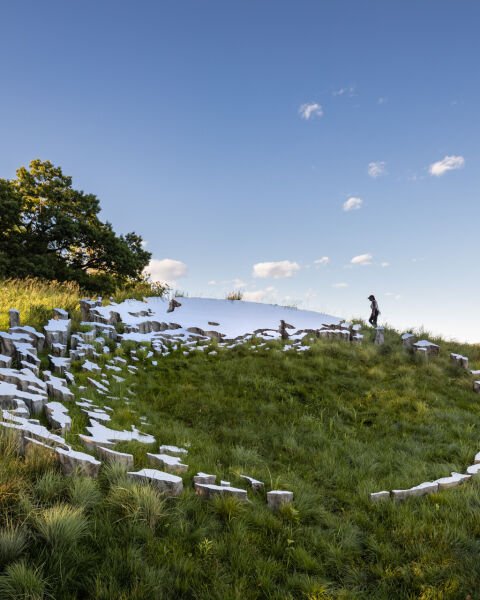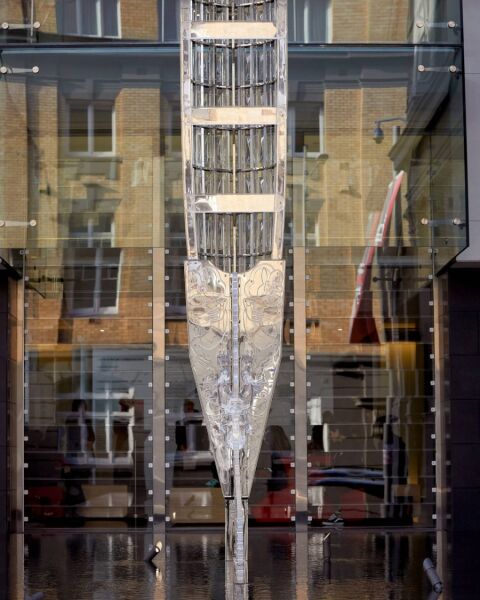Photographic Journey of Ouroboros
Lindy Lee’s 13-tonne sculpture, Ouroboros, is in place after three years of anticipation.

How is it made?
There are several stages involved in making Ouroboros, but four critical portions are pattern making, sand casting, fabrication, and finishing.

Sand casting involves creating cope and drag patterns, then moulding and casting. Reclaimed and recycled stainless steel is poured into moulds and allowed to cool.
#1




Fabrication begins with raw castings being cleaned, fettled, and sandblasted. Fettling is the process by which rough edges are trimmed, and all excess cast components are removed.

During the finishing process, sandblasted panels are treated with an acidic solution for 45 minutes to re-establish a protective chromium oxide layer, minimizing the potential for oxidization.




Panels are sandblasted for smoothing and polishing before being assembled onto a temporary steel armature. Alignment is checked and adjusted during this step, with the aid of augmented reality for the fabricators.

After aligning the panels, they are welded together and then prepared for finishing.


Before final finishing, plasma cutting of voids begins. Once the plasma cutting is completed, final shaping and finishing starts to create a mirror-polished reflective surface.

After the assembly and finishing is complete, a final passivation process is applied to protect the Ouroboros.
Finally… The Ouroboros then begins its journey to the National Gallery.



Image Credit: National Gallery of Australia, Sam Cooper, Rachel See, Joe Ruckli
#相关文章

Sarah Sze Embeds Mirrored Installation into Storm King Art Center's Landscape
Sarah Sze has created an 11-metre-wide concave sculpture to capture a pool of reflected sky in the dirt at Storm King Art Center. The work, entitled Fallen Sky, is made up of 132 individual elements with surfaces of mirror-polished stainless steel.

Waka made from hundreds of crystals lands at Toi o Tāmaki
A 10-metre-high waka made of crystals created by artist Reuben Paterson has taken pride of place at the Auckland Art Gallery,

Tamara Dean Interview on Artist Residency
A Journey from 2D Photography to 3D Sculptural Art: Tamara Dean shares her experience at UAP during her Artist Residency in Brisbane, Australia.




